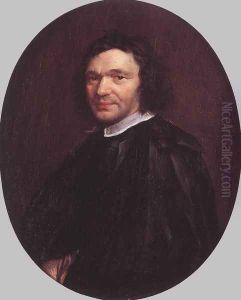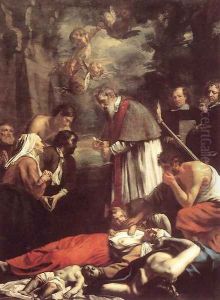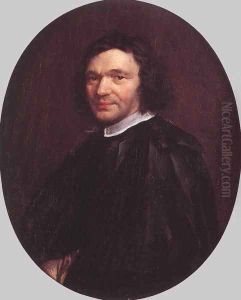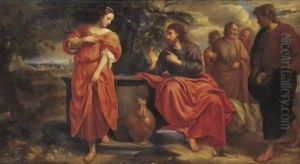Jacob van, the Younger Oost Paintings
Jacob van Oost the Younger was a Flemish Baroque painter, born in 1639 in Bruges, then part of the Spanish Netherlands. He was the son of Jacob van Oost the Elder, who was also a prominent painter and his first teacher. Jacob the Younger is often confused with his father due to the similarity of their work and their shared name, but he managed to carve out his own reputation in the world of art.
The van Oost family was well-known in the region for their artistic contributions. Jacob the Younger’s training began under his father’s guidance, learning the craft and techniques that were essential for a Baroque artist. He later traveled to Italy, which was a common practice among artists of that period seeking to refine their skills and study the works of the Renaissance masters. Italy's rich artistic environment provided him with fresh inspiration and greatly influenced his style and technique.
Upon his return to Bruges, Jacob the Younger continued to work and develop his artistic career. He inherited his father's workshop, which was one of the most significant in Bruges at the time. Jacob the Younger’s work often depicted religious themes, a common subject in Baroque art, characterized by dramatic expression, rich color, and intense light and shadow contrasts. He also painted portraits, genre scenes, and occasionally historical subjects.
Despite the overshadowing fame of his father, Jacob the Younger achieved recognition in his own right. His paintings were appreciated for their technical skill and emotional depth. He became a master in the Guild of St. Luke, an association of painters, and his influence extended to teaching, nurturing the next generation of artists.
Jacob van Oost the Younger continued to paint until his death in Bruges in 1713. His works can be found in various churches and museums, contributing to the rich tapestry of Flemish Baroque painting. Although not as widely known as other artists from his era, his contribution to the art world during his lifetime was significant, and his legacy continues to be studied and appreciated by art historians and enthusiasts alike.



